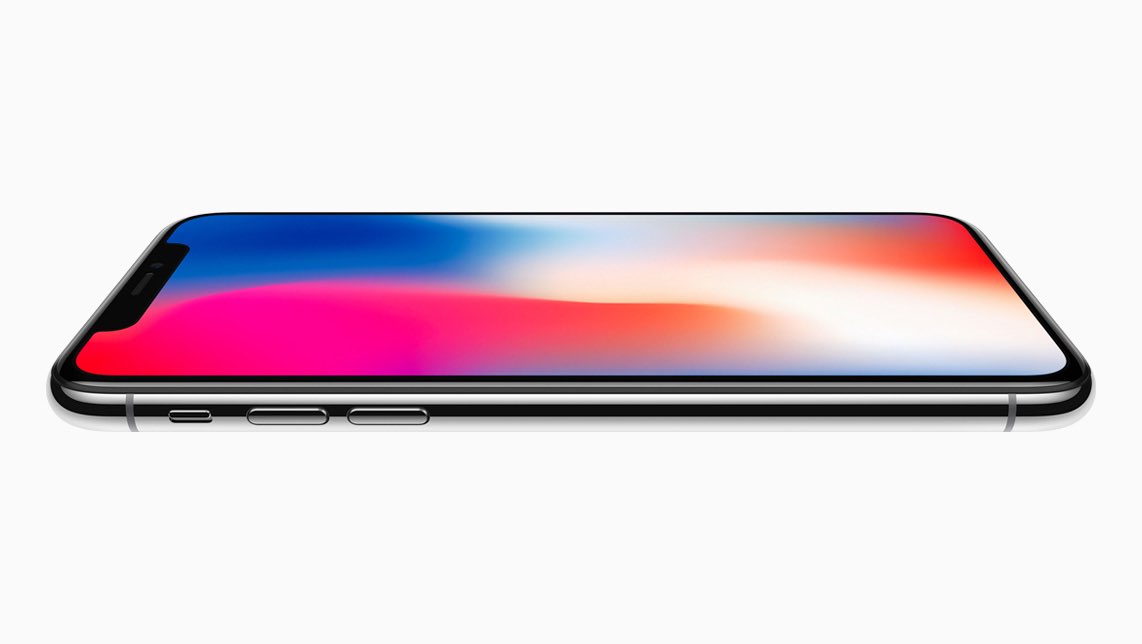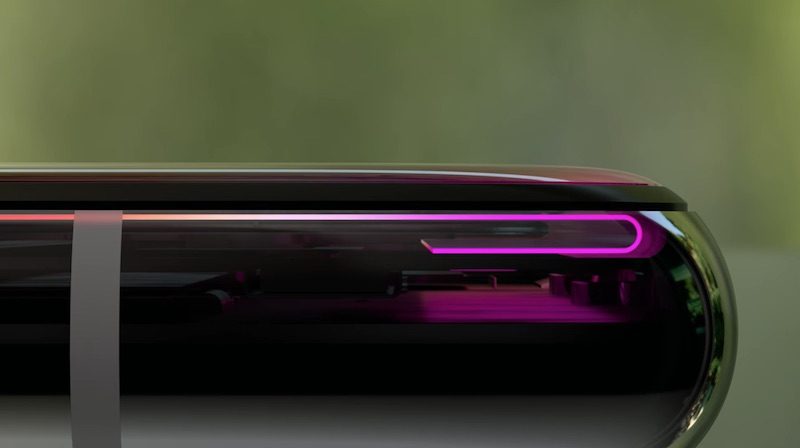Apple has almost completely switched to OLED screens with the iPhones. The switch to OLED would also be planned for the iPads and MacBooks. On this page we discuss what makes this screen technology special, what the advantages are and whether it makes sense to wait for the successors, Mini-LED and MicroLED.
- Apple products with OLED
- Explanation
- Advantages
- Cons
Apple products with OLED screen
The following Apple products are equipped with an OLED screen:
-
iPhone 12 series and newer
-
iPhone 11 Pro (Max)
-
iPhone XS (Max)
- iPhone X
-
Apple Watch (all models)
The iPhones with OLED screen have an increased screen resolution called Super Retina (XDR).
So there is no OLED screen in the iPhone SE 2020/2022, iPhone XR and iPhone 11. Apple has used a better quality LCD screen in the two latter models, called Liquid Retina. This should combine the advantages of LCD and OLED.

Possible future products with OLED screen are:
-
iPad Air 2023/2024 (?)
-
iPad Pro 2024 (?)
-
MacBook Pro 2024 (?)
These products have not yet been officially announced. You can read more about the status of iPads with an OLED screen below.
What is OLED?
OLED stands for Organic Light Emitting Diode and is now a widely used technology for high-resolution displays. In addition to smartphones, we also increasingly find OLED in televisions. Other smartphone manufacturers such as Samsung and Sony have been using OLED screens for much longer. In the beginning, those manufacturers sometimes had problems with the brightness or color fidelity of their screens, but the technology has now developed so far that those disadvantages are a thing of the past.
The main feature of OLED is that each individual pixel gives off individual light. The pixels consist of organic materials. As soon as current passes through it, the pixels light up. The technology mainly has advantages, but there are also a few disadvantages.

The successor is already in the starting blocks: MicroLED. In the explanation below you can read more about this new screen technology, which is still too expensive to produce.
Advantages of an OLED screen
An OLED display has the necessary advantages over the ‘regular’ LCD LED screens that you will find in previous Apple products. Good to know: OLED is not brighter than an LCD screen. The brightness, measured in nits, is generally somewhat lower. However, there is more contrast and the color reproduction is better, making it look nicer.
#1 More beautiful colors and better image quality
A big advantage of OLED is that it doesn’t need a backlight to work. This is better for your battery (more on that later), but also produces better color saturation. Black tones in particular improve as a result. They are darker and deeper than ever. This is because the pixels themselves emit light and they can also be completely switched off for displaying the color black.

#2 Better contrast
LCD displays block the light at a black color, so that some light can still leak past them. With OLED, the pixel is completely switched off. Due to the lack of that constant backlight, the difference between the darkest and lightest pixel is also greater, resulting in better contrast. If you compare the response speed of an OLED pixel to that of an LCD pixel, you will see that LCD can change color less quickly. In addition, the viewing angle of LCD is a lot less, so that the brightness and color can change when you view the screen from the side.
OLED displays support HDR display. HDR stands for High Dynamic Reach. Photos and videos made with HDR look a lot nicer thanks to true-to-life colors. With suitable films (recognizable by Dolby Vision and/or HDR10 logos), everything looks just a bit more lively. You can also watch HDR on iPhone on YouTube.
#3 OLED iPhones are more energy efficient than LCD iPhones
We actually just said it: because OLED does not need a backlight, the technology is by definition more energy-efficient than LED. Add to this the fact that pixels are switched off with the color black, which also costs less energy. In many cases, this ensures a more energy-efficient display, but there are exceptions. On an OLED iPhone, the dark mode also has a practical use, in addition to the fact that it looks nicer and calmer for your eyes, especially at night. More and more apps therefore have a dark mode, sometimes even with an extra option for OLED models, so that many parts of the app are deep black.

#4 Better clarity
A positive consequence of OLED screens in iPhones is that these displays are a lot brighter. For comparison: an iPhone 11 Pro has a standard maximum brightness of 800 nits, compared to 625 nits with an iPhone 11 with an LCD display. Newer displays can even handle 1200 nits with HDR content. And with a higher brightness, images stand out even more.
#5 OLED screens are thinner and more flexible than LED
OLED screens can be made thinner and more flexible than LCD displays, so that they can even be ‘printed’ on a flexible screen, as it were. Due to the lack of the backlight, the screens are not only thinner, but also lighter. This makes its production somewhat more complex. More on that in the cons.

OLED iPhones: Disadvantages of an OLED screen
It’s not just a party with OLED. There are also some disadvantages to this screen technology compared to LCD. The two criticisms that can be heard most often have to do with the lifespan and energy efficiency. And then of course there is the price.
#1 Visible changes with longer use and risk of burn-in
The material required to produce the blue light of OLED screens has a limited lifespan compared to LED screens. As a result, you will get a less bright screen over time and the colors may look different. These blue OLED screens last about 14,000 hours and then only 50% of the original brightness remains.
This is a real problem for the iPhone, since you regularly activate this screen throughout the day. That is why there is a lot of research into how the lifespan of these blue OLEDs can be further extended. The problem with blue OLED does not occur in all variants. For example, LG would apply color filters, which negates the problem. So it depends on the technique Apple has used whether this is an issue they should be aware of.
Since the release of the iPhone X in 2017, there have been no widespread complaints about reduced image quality with extended use. Apple does warn that small visible changes can occur with OLED screens. In addition, an OLED display is more susceptible to burn-in, especially if the same image is shown for a long time with a high brightness. So a so-called residual image may remain. Think of a logo that is in the same place for a long time, which can still be vaguely visible even after switching the image. Because you often use the iPhone in shorter poses and the same image is rarely if ever shown for a long time, the iPhone is hardly affected by this. In addition, Apple uses all kinds of techniques to prevent burn-in.
#2 Less energy efficient with screens with a lot of white
OLED screens are more energy efficient, but this is especially true in situations with a lot of black tones. Scenes with a lot of white use even more energy than LED. Relatively much white is used in apps, for example in Apple’s Settings and Calendar app. Naturally, a lot of effort has been put into improving the technology in this area in recent years.
#3 Water is OLED’s worst enemy
Because OLED is quickly damaged when it comes into contact with water, Apple will have to do its best to make sure the screen is well shaded. Apple promises that the iPhone is water resistant according to the IP67 standard. If all goes well, water cannot just reach the OLED screen.

#4 Manufacturing OLED iPhones is trickier than LCD
As stated earlier, the production of OLED displays is complex when compared to that of LCD displays. The number of manufacturers that make the screens is limited, as is the edition. Apple needs large quantities of screens and prefers not to be dependent on one supplier. The current OLED screens in the iPhones are made by Samsung and LG, but Apple is always looking for more suppliers to lower the price. Until then, stocks remain limited and that probably means Apple has to buy at a hefty price – which in turn affects the retail price. It is true that OLED displays have become increasingly affordable over the years. That is also one of the reasons that Apple will also apply this technique to the cheaper models in 2020.
#5 Some people may get headaches
Some people are sensitive to the rapid flickering of the OLED screens. They may get a headache and feel nauseous. This has been known for a long time and has to do with the fact that some people are sensitive to fast movement. With such people, functions such as Reduce Motion can help to make the image look a bit calmer.
If you have a device with ProMotion, it also plays a role that the refresh rate can go down from 120Hz to 10Hz, depending on the application you use. This can also be a source of nausea and headaches. The solution is actually very simple: if you suffer from this, you can opt for a device without ProMotion and/or a device without an OLED screen, such as the iPhone SE series.
Where are iPads and Macs with OLED?
Apple now uses OLED for the iPhone and the Apple Watch. There are rumors that Apple wants to start production of iPads and MacBooks with OLED screens in 2022, but we think it will be sooner around 2024. At the same time, Apple is also looking at other screen technologies. For example, the first MacBooks and iPads with mini LED were released in 2021. A follow-up to this is microLED. No products have been published yet.














